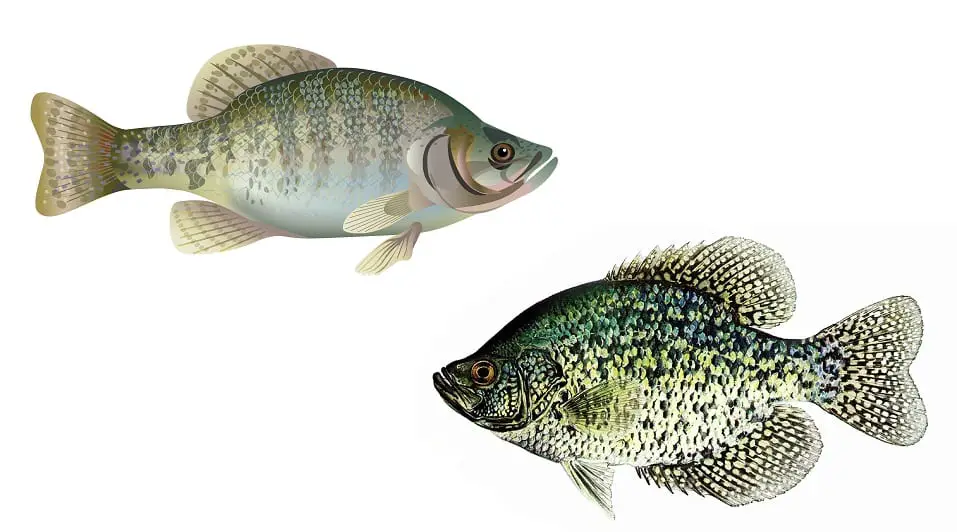
Crappie are one of the most popular sport fish in North America. They have a reputation for tasting good, which is why they are a prime target of those who fish the freshwater areas of the US and Canada. Being so abundant, crappie are not uniform in their development which means that they have subtle differences in terms of their appearance.
There are two species of crappie, white crappie and black crappie. Both species are similar in terms of their shape, feeding and mating habits, and overall size. In addition, both species have similar feeding habits of hunting prey around dawn and subsequent twilight hours. However, the differences between the species are subtle, but significant enough to make each species unique.
Crappie Species
White Crappie
Called Pomoxis annularis, white crappie can be found across North America in freshwater lakes, rivers, and streams. Sometimes called silver perch or goldring, crappie are part of the genus Pomoxis as it refers to the bones which help form its face and jawline. And annularis refers to the fact that it has rings located along the side of the fish.
Adult white crappie grow to nine to ten inches long and weigh over a pound up to two pounds on average. The largest white crappie ever recorded was 5.2 pounds. White crappie tend to feed on small fish along with large invertebrate species such as hellgrammites and crayfish. They also tend to feed on their young as well. This may be because both species of crappie produce so many young at one time.
Crappie tend to be languid during the daylight hours preferring the shelter of rocks or underwater vegetation. They only become more active during feeding time which is when the light is dim which occurs in the early morning or late evening hours that make it easier to catch prey.
Black Crappie
Called Pomoxis nigromaculatus, black crappie can be found in the freshwater lakes, rivers, and streams across North America. Pomoxis refers to the sharp facial structure and jawline while nigromaculatus is Latin for “black spotted”. Black crappie have deep bodies that are compressed laterally. Appearing silver-gray or sometimes green in color, the most notable visual feature of black crappie is the numerous spots or dark blotches across its body.
Black crappie tend to grow to be five to eight inches long and can weight up to two pounds. The largest black crappie ever caught weighed 4 pounds 15 ounces, although there are records of a black crappie that managed to reach six pounds.
The main visual difference between white and black crappie is that white crappie have a series of vertical bars that run along its body. While black crappie tend to have dark spots, hence the name. White crappie also have six dorsal fin spines while black crappie have either seven or eight.
When compared side by side, a white crappie tends to be slightly longer. Otherwise, both fish are quite close in terms of their appearance. But there is just enough difference to separate them into two different species.
Related: